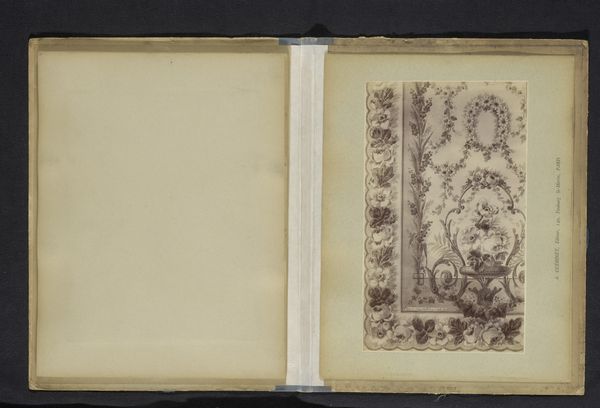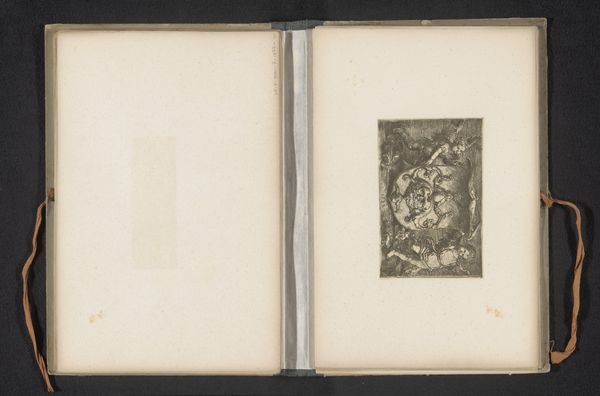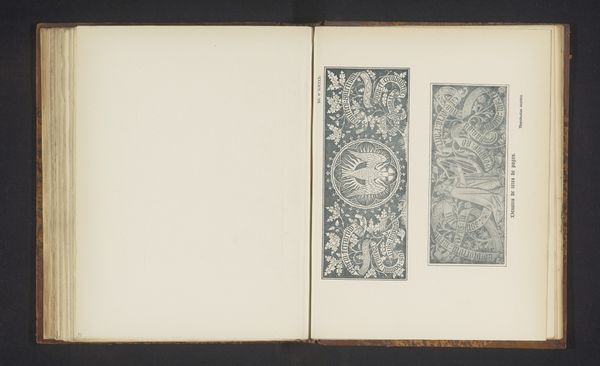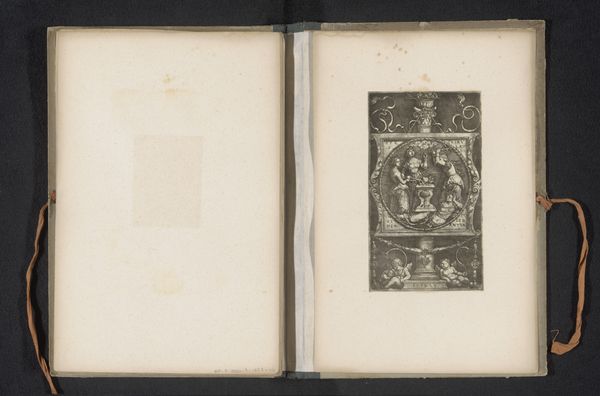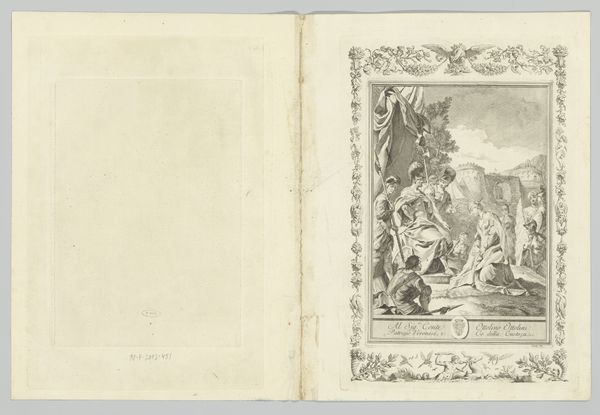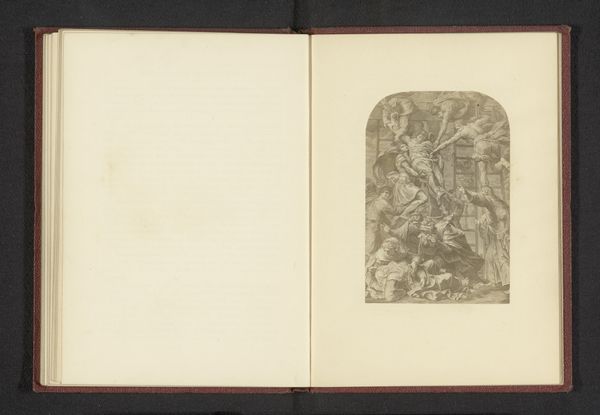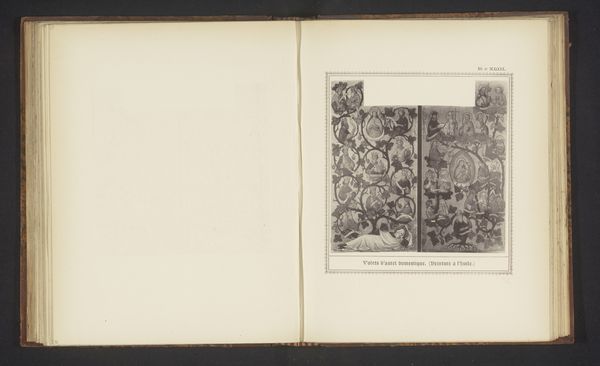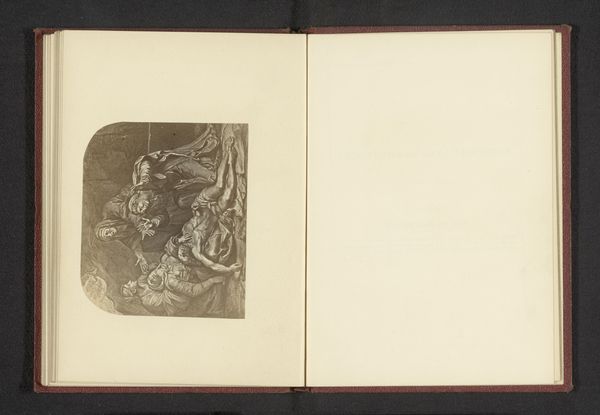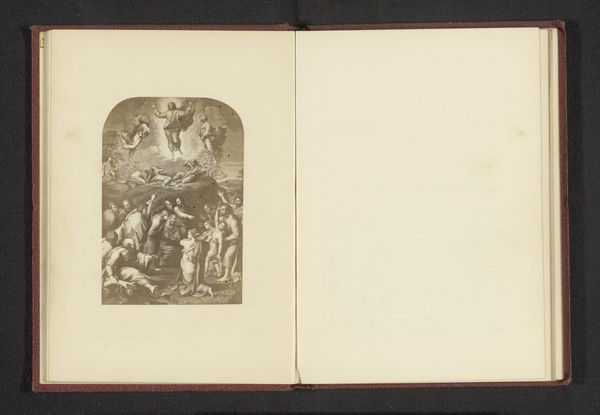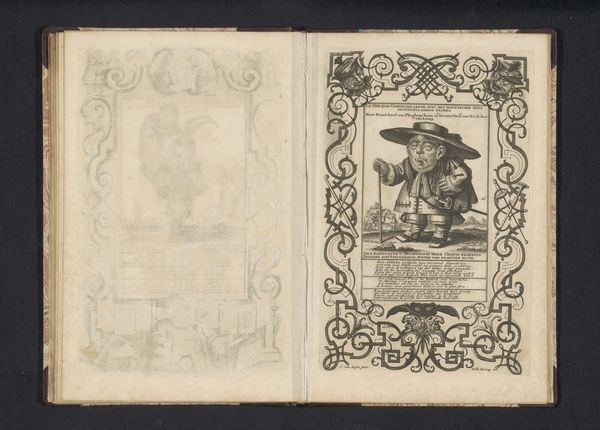
Fotoreproductie van een decoratief patroon met bloemen en architectonische fragmenten before 1900
0:00
0:00
Dimensions: height 266 mm, width 182 mm
Copyright: Rijks Museum: Open Domain
Curator: This is a photograph of a decorative pattern, likely from before 1900, showcasing both floral elements and architectural fragments. It appears to be from a sketchbook. Editor: My first thought is "opulence," but with a somewhat faded grandeur, if that makes sense. It feels almost ghostly in its ornate detail. Curator: Absolutely. You can almost feel the textures. Looking at the printing process and the use of photography, it's fascinating how readily these images of design patterns were circulated. Were they intended for other artisans? Perhaps architects? The access and ease of distribution this kind of reproduction offered would have drastically impacted design processes at the time. Editor: I wonder about the context of these types of patterns, and how this specific one was intended to be seen. Decorative arts often functioned as signs of social class and aesthetic sensibilities. Who would be consuming this, and what message would its floral-architectural fusion convey about their values? Curator: It really pushes us to question how we categorize “art” versus “craft,” or “high” versus “decorative.” Consider the skill involved in crafting that original pattern and the labor then invested in reproducing and disseminating it. The materiality and access points deeply informed not just aesthetics, but the very act of art creation and the dialogue around it. Editor: And the original object and subsequent dissemination speaks to changing technologies in production of imagery—moving toward photographic means. Did this shift devalue handmade artwork and place different importance of craftsmanship in public awareness and imagery? Curator: Certainly it would. There is a significant discussion that should be considered around mechanization and artistry in decorative practices from the mid-1800s onward. Editor: Yes, thinking about that and who decides to consume imagery to reinforce social values of class and production provides insights on these designs as they appeared within private display. Curator: Ultimately, looking at this “reproduction,” one can see the threads connecting design, industry, social hierarchies, and photographic methods and artistic intentions that create art historical importance. Editor: Absolutely. A poignant intersection where the material meets meaning, transforming our perception of decorative arts and photographic works as powerful mirrors reflecting cultural values and artistic development.
Comments
No comments
Be the first to comment and join the conversation on the ultimate creative platform.
